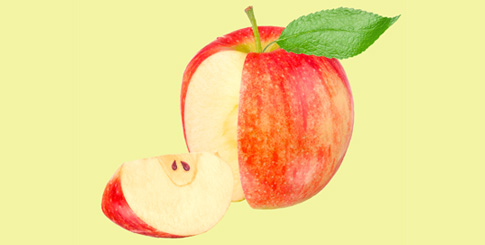Suppliers are excited about the quality and quantity of this year’s apple crop—even though it’s still early for definitive figures. Regardless, growers large and small are continuing their quest for new varieties, hoping one will equate or surpass the popularity of Honeycrisp.
For the most part, weather in the top growing regions has been cooperative, promising a successful crop for both longtime and contemporary favorites. In addition, both organic and conventional varieties continue to thrive as top exports. Let’s take a more detailed look at what to expect from the fall apple crop, from trending varieties to production projections, region by region.
In the West
Oregon, Idaho, a few other western states, and British Columbia produce apples, but by far the largest grower in the region and entire United States is Washington. Weather in the eastern portion of the state, where tree fruit grows best, has been good for the most part according to Roger Pepperl, marketing director for Stemilt Growers, LLC, headquartered in Wenatchee.
Temperatures, Pepperl notes, were “extremely cool and the bloom was late, which can delay the season seven to ten days later than normal, which would have the biggest impact on early Gala and Honeycrisp sales.”
Even though remaining on the tree longer than usual helps apple quality because the fruit matures in a cooler harvest window, Pepperl says growers do miss some of the back-to-school promotional window. In turn, this could lead to reduced sales for some items, like fresh-cut fruit bags for lunchboxes.
Promotional efforts
Rainier Fruit Company in Yakima has popularized the state’s apples in a novel marketing push—by becoming a sponsor of the famed Boston Marathon. Everyone involved with the race gets to sample Washington apples.
“It was a natural fit for us, sponsoring the ‘holy grail’ of all running marathons,” comments Andy Tudor, director of business development for Rainier Fruit Company in Yakima, WA. “We produce healthy products, so why not align with an event that promotes a healthy, wholesome-to-the-core lifestyle? All 50 states are represented and many countries at the marathon.”
In Idaho, Symms Fruit Ranch, Inc. in Caldwell has focused its promotional efforts on new ways to package apples. Sally Symms, director of sales for the grower-shipper, says small bags of apples holding two or three pounds are attractive to on-the-go shoppers. The company is also experimenting with ways to wrap sliced apples to provide convenient, ready-to-eat fruit for consumers. Both types of packaging are designed to motivate shoppers to buy and eat more apples.
Traveling south, California reigns as the second largest exporter of U.S. apples, sending the fruit to 27 countries. Its production ranking comes in at fifth nationally and Golden State apples are the first to be harvested in the region, with the season running from mid-to late-July through October. Galas, Fujis, Granny Smiths, and a host of other varieties will hit retail shelves in the summer and fall.



